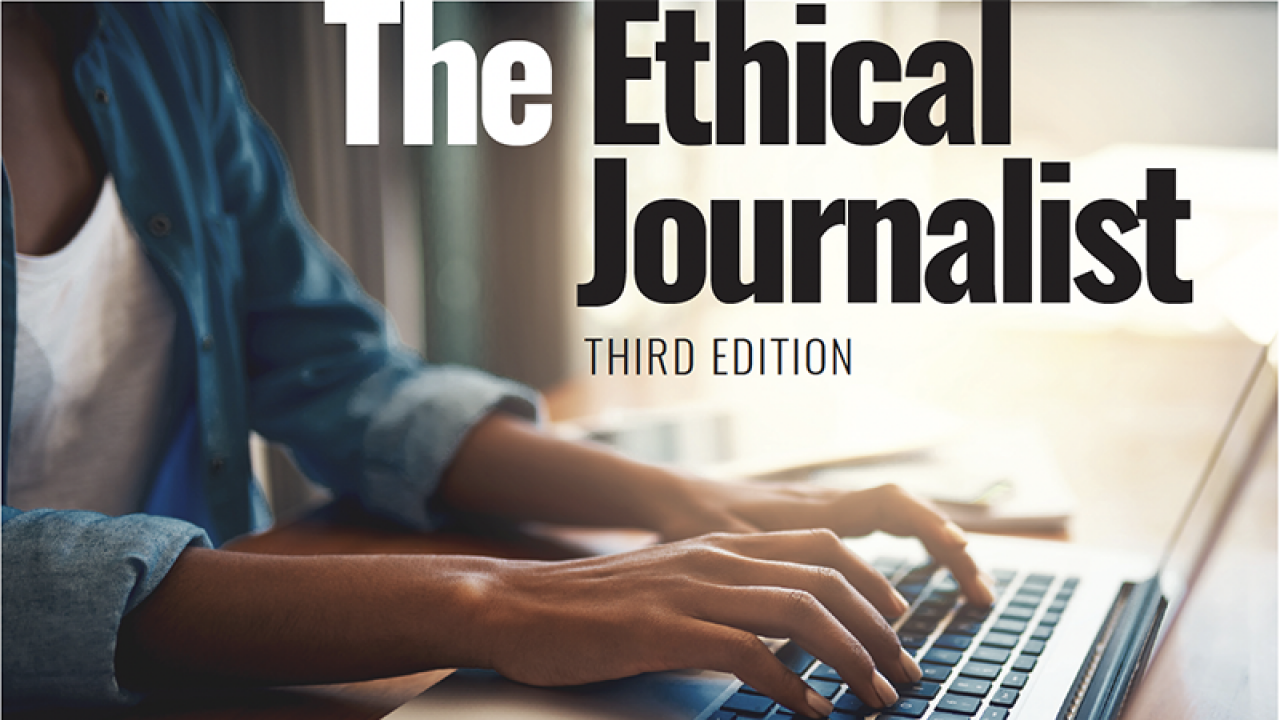April 12, 2022
Third edition of 'Ethical Journalist' links core ethics principles with current challenges

Over the last six years, the journalism profession has been roiled by the precedent-shattering experience of covering Donald Trump’s presidency and by clashing opinions on journalists’ use of social media. The third edition of a widely used college textbook addresses these issues while emphasizing the bedrock importance of ethics in newsgathering.
“The Ethical Journalist: Making Responsible Decisions in the Digital Age,” to be published in June by Wiley-Blackwell, offers case studies that allow students to debate the decisions of actual journalists. In addition, students can consider the ideas of leading journalists and scholars who have written point-of-view essays. About one-third of the case studies and essays are new in this edition.
The first two editions of the book, published in 2009 and 2014, were written by Gene Foreman, former managing editor of The Philadelphia Inquirer and former Larry and Ellen Foster Professor of journalism at Penn State’s Donald P. Bellisario College of Communications.
Foreman, now retired, is joined in the new edition by three Inquirer colleagues who have taught journalism ethics at the college level: Dan Biddle, Emilie Lounsberry and Rich Jones. Biddle has taught at the University of Pennsylvania and the University of Delaware, Lounsberry at The College of New Jersey, and Jones at the University of Notre Dame. Biddle is a winner of the Pulitzer Prize.
In a detailed chapter examining how the news media covered Trump, the authors observe: “In his years as candidate and president (2015-21), Trump shook journalism as no earlier president had. … The Trump years tested modern journalism’s habits, tools, and tenets. Past presidents had attacked the press, or misled, or lied, but not at the rate Trump did – more than 30,000 false or misleading statements in four years… . Journalism had no playbook for this.” The purpose of the chapter is “to sift the embers of the Trump era for lessons that ethical journalists can learn.”
In their expanded discussion of social media, the authors review the debate over whether journalists should be permitted to express their personal opinions on controversial issues. They explain how news organizations have traditionally curbed public expression of opinion by those who report the news, and they suggest that “the choice for individuals is whether they can be both journalists and social activists, and if they can’t, which role they value more.”
“A riveting examination of journalism ethics, updated for the seismic change that is now an industry constant."
- Ann Marie Lipinski
For newsroom leaders, the authors offer this advice: “The goal should be to articulate a social media policy that commands the staff’s respect and compliance. Leaders would be wise to solicit the staff’s suggestions in creating the policy.” Enforcement, the authors say, should offer an opportunity for conciliation: “Most first-time violations deserve to be handled in an informal conversation with a supervisor, [but] if the policy itself is to have integrity, repeat violations have to be dealt with firmly.” Importantly, the news organization should emphasize that it will “defend staffers against abuse and threats directed at them online.”
Foreman, who spent 25 of his 41-year newsroom career at The Inquirer, said the book “parallels the kind of discussions that real journalists have among themselves.” He says it is more than a textbook: “Anyone with an interest in journalism will benefit from the in-depth look at the ethics problems that today’s journalists face.”
The book’s Part I offers a general look at ethics and a decision-making template. In Part II, readers are encouraged to put ethics to work in resolving real-life examples of reporters’ and editors’ quandaries.
On the back cover of the book, Ann Marie Lipinski, former editor of The Chicago Tribune and now curator of the Nieman Foundation at Harvard University, writes “A riveting examination of journalism ethics, updated for the seismic change that is now an industry constant. ‘The Ethical Journalist’ is written to fortify journalism students, but real-life examples of everything from faked photographs to reporting on presidential lies make it valuable to all who care about the news.”
In a Foreword in the book, Philip B. Corbett, associate managing editor for standards of The New York Times, writes: “The case studies in this book demonstrate something I’ve learned and relearned during nearly four decades in journalism. For many of the most important decisions we make, there’s no single, obvious right answer.
Even when we agree on the principles, it’s not always clear how they apply to a messy set of circumstances. There are hard calls, gray areas and difficult balances to strike. This textbook doesn’t provide a convenient list of the right answers to all the problems you’ll face. It helps you learn how to think about those problems.”
The well-illustrated book is accompanied by two websites. One is a password-protected site for professors providing resources to help them teach and administer a course in journalism ethics. The other is an “Authors’ Forum,” in which professors, students and the authors can discuss new case studies and developing issues in journalism ethics.
The Page Center provided funds for the research, writing, and production of the book, and the Bellisario College of Communications at Penn State provided research support. The Philadelphia Inquirer granted permission for the authors to use 13 of its news photographs in the book.
Bill Marsh of The New York Times, formerly of The Inquirer, designed the book, and Charles Knittle, former Inquirer and New York Times copy chief, edited it. Katie O’Toole of the Bellisario College faculty and Mary Lowe Kennedy, former Inquirer copy editor, read the manuscript and offered helpful suggestions.
